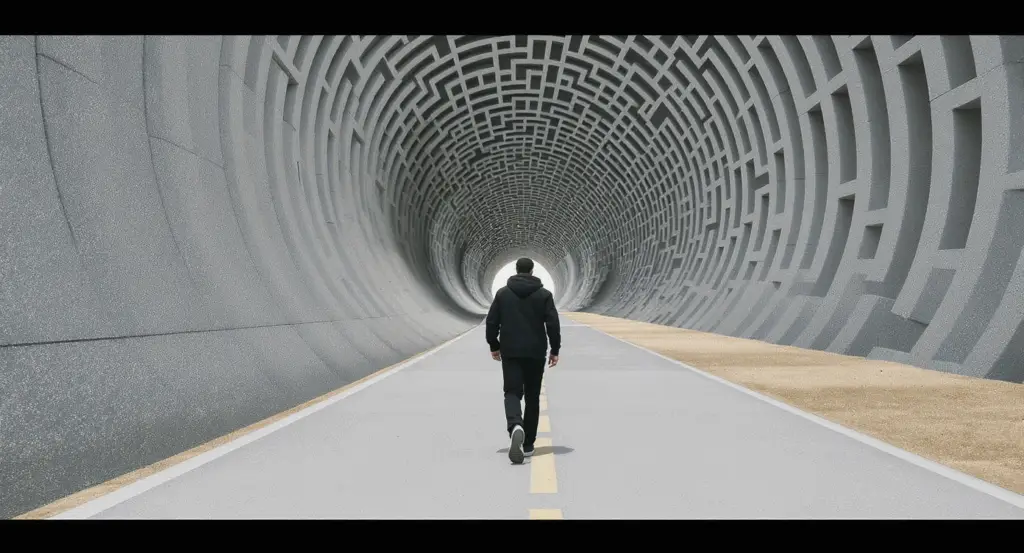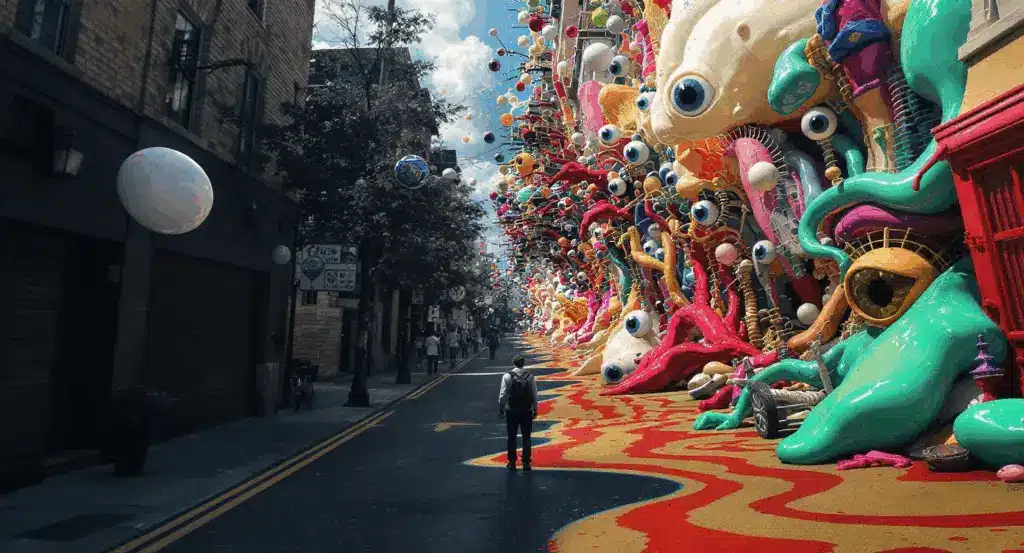LSD
MITÄ SINUN ON TIEDETTÄVÄ
Narconon
Täydellinen koulutuslähde
Lataa koko Narcononin LSD-koulutusesite, josta saat kattavat tiedot.
Lataa täydellinen PDF-esiteTäydellinen koulutusmateriaali Narcononilta
Mitä LSD on?
LSD (LYSERGIHAPPODIETYYLIAMIDI) ON YKSI VOIMAKKAIMMISTA MIELIALAA MUUTTAVISTA KEMIKAALEISTA. Sitä valmistetaan lysergihaposta, jota esiintyy rukiissa ja muissa viljoissa kasvavassa torajuurisienessä.
Sitä valmistetaan kristallimuodossa laittomissa laboratorioissa pääasiassa Yhdysvalloissa. Nämä kiteet ovat muutetaan nesteeksi jakelua varten. Se on hajutonta ja väritöntä, ja siinä on hieman karvas maku.
LSD:tä, joka tunnetaan hapolla ja monilla muilla nimillä, myydään kadulla pieninä tabletteina (mikropisteinä), kapseleina ja kapseleina. tai gelatiiniruutuina (ikkunapaneeleina). Sitä lisätään joskus imukykyiseen paperiin, joka sitten jaetaan seuraaviin osiin pieniksi neliöiksi, jotka on koristeltu kuvioilla tai sarjakuvahahmoilla (looney tunes). Toisinaan sitä myydään nestemäisessä muodossa. Mutta olipa se missä muodossa tahansa, LSD johtaa käyttäjän samaan paikkaan - vakavaan... irrottautumiseen todellisuudesta.
Mikä on hallusinogeeni?
Hallusinogeenit ovat huumeita, jotka aiheuttavat hallusinaatioita. Käyttäjät näkevät kuvia, kuulevat ääniä ja tuntevat tuntemuksia. jotka vaikuttavat hyvin todellisilta, mutta joita ei ole olemassa. Jotkin hallusinogeenit aiheuttavat myös äkillisiä ja arvaamattomia muutoksia. niiden käyttäjien mielialassa. LSD on yksi tärkeimmistä hallusinogeenien luokkaan kuuluvista huumeista.
LSD:n käytön merkit ja oireet
KUN TAAS LSD VOI OLLA VAARALLINEN HUUME, JOTA KÄYTTÄVÄT LÄHINNÄ NUORET, vanhemmat tai läheiset hyötyvät siitä, että LSD:n käytön merkit ovat niin selvät, että tämäntyyppinen huumeidenkäyttö on helppo havaita.
Noin tunnin kuluessa tämän lääkkeen nauttimisesta henkilön käsitykset ja todellisuudentaju alkavat muuttua. Tämä saattaa pelottaa henkilöä, joka kokee sen ensimmäistä kertaa, tai henkilöä, joka on emotionaalisesti epävakaa. Mutta henkilölle, joka tietää, mitä on tulossa, tätä pidetään toivottavana muutoksena.
LSD:tä käyttävä henkilö voi tuntea olonsa rentoutuneeksi ja sosiaalisemmaksi. LSD:n käyttökokemuksen läpikäymistä kutsutaan nimellä tripiksi. Toisaalta huonot tripit ovat täysin mahdollisia, mikä tarkoittaa, että henkilö pelästyy ja paniikissa. Mutta jos henkilö joutuu paniikkiin, hän ei pääse pakoon muuttuneesta universumista, johon hän joutuu.
Muuttuneisiin käsityksiin voivat kuulua muun muassa nämä:
- Ajan, syvyyden, tilan, koon ja muodon vääristymät.
- Hallusinaatioita asioista, joita ei ole olemassa, tai paikallaan olevista esineistä, jotka liikkuvat. Useimmissa tapauksissa henkilö on tietoinen näiden vaikutusten epätodellisuudesta, mutta tilanteissa, joissa tämä ei ole totta, voi aiheutua vammoja tai kuolema.
- Muuttunut käsitys nopeudesta.
- Yhdistetty aistikokemus, kuten värien "kuuleminen" tai musiikin "näkeminen".
- Äänen, kosketuksen tai näön voimistunut aistiminen. Visuaaliset hallusinaatiot voivat vaihdella värien voimistumisesta tai valon välähdyksistä liikkuviin geometrisiin tai muihin kuvioihin, jotka voidaan nähdä silmät auki tai kiinni.
- Tunne siitä, että henkilö on poistunut kehostaan tai että hänen kehonsa on muuttanut muotoaan.
LSD-tripillä oleva henkilö saattaa tuntea saavansa jonkin erityisen ymmärryksen tai oivalluksen, jota ei ole ollut. ilman huumetta. Pyrkimys ymmärtää elämää paremmin tai jatkaa näitä oivalluksia voi ajaa henkilön toistamaan kokemuksen.
TESTIMONIA - Justin
"Aloitin juomisen viisitoistavuotiaana. Sitten siirryin käyttämään ekstaasia, spiidiä, kokaiinia ja LSD:tä.
Minun oli vaikea pysyä työssä, masennuin ja ajattelin, etten koskaan selviäisi työelämästä.
pakkomiellettäni huumeisiin. Yritin kahdesti itsemurhaa ottamalla yliannostuksen pillereitä. Minut laitettiin psykiatrien hoitoon.
jotka antoivat minulle vielä enemmän lääkkeitä, masennuslääkkeitä ja rauhoittavia lääkkeitä, mikä vain pahensi tilannetta.
Päästäkseni tunteitani ulos turvauduin itsensä vahingoittamiseen - aloin viiltelemään ja polttamaan itseäni." -Justin
Fyysisiä merkkejä LSD:n käytöstä ovat muun muassa seuraavat:
- Laajentuneet (laajentuneet) pupillit
- Syljeneritys tai suun kuivuminen
- Sormien tai varpaiden pistely
- Heikkous
- Kielteiset vaikutukset, kuten emotionaalinen ahdistus, ahdistus, masennus, sekavuus tai vainoharhaisuus.
- Huimaus, pahoinvointi, nopea syke ja kouristukset.
- Hikoilu tai vilunväristykset
- Näön hämärtyminen
- Epäsäännöllinen käyttäytyminen
LSD-trip voi kestää jopa kaksitoista tuntia. LSD-tripillä oleva henkilö voi kokea kehon lisääntyneen lämpötila, sydämen syke ja verenpaine. Hän ei välttämättä tunne väsymystä eikä halua syödä.
Huumeiden vaikutusten vuoksi trippaava henkilö voi kokea nopeita tunne-elämän vaihteluita, mukaan lukien paniikkia, epätoivoa ja kauhistuttavia ajatuksia.
TESTIMONIA - Michelle
"Saimme happoa eräältä kaverilta, joka oli vierailulla yliopistossamme, ja se oli kirjoituslapussa. Ja siellä oli kokonainen ryhmä meistä, jotka ottivat sitä happoa, sairastui pahasti. Muistan vain istuneeni vessan vieressä... vessan lattialla, itkien ja miettien, milloin se loppuisi - rukoillen, että se loppuisi... että se vain loppuisi. Minulla oli niin paljon kipua." -Michelle
LSD:n terveyshaitat
LSD:N VAIKUTUKSET OVAT ARVAAMATTOMIA. Ne riippuvat otetusta määrästä; vahvuus ja annoksen vahvuudesta ja puhtaudesta, käyttäjän persoonallisuudesta, mielialasta ja odotuksista sekä ympäristöstä, jossa huumausainetta käytetään. Yleensä käyttäjä tuntee huumeen ensimmäiset vaikutukset kolmekymmentä - yhdeksänkymmentä minuuttia sen ottamisen jälkeen.
Aistimukset ja tunteet muuttuvat paljon dramaattisemmin kuin fyysiset merkit. Käyttäjä voi tuntea useita tunteita samanaikaisesti tai vaihtua nopeasti tunteesta toiseen. Jos lääkettä otetaan tarpeeksi suuri annos, se voi aiheuttaa aiheuttaa harhoja ja näköharhoja. Käyttäjän ajantaju ja minäkäsitys muuttuvat. Aistimukset voivat tuntua "ylittyvän", jolloin käyttäjälle tulee tunne, että hän kuulee värejä ja näkee ääniä. Nämä muutokset voivat olla pelottavia ja voivat aiheuttaa paniikkia.
Jotkut LSD:n käyttäjät kokevat vakavia, pelottavia ajatuksia ja tunteita, pelkoa hallinnan menettämisestä, pelkoa mielenvikaisuudesta. ja kuoleman pelkoa sekä epätoivoa LSD:n käytön aikana. Joitakin kuolemaan johtaneita onnettomuuksia on tapahtunut LSD:n päihtymystilan aikana.
Jotkut LSD:n käyttäjät kokevat myös flashbackeja, eli LSD-kokemuksen tiettyjen osa-alueiden toistumista ilman käyttäjä ei ole ottanut huumetta uudelleen. Flashback tapahtuu yhtäkkiä, usein ilman varoitusta, ja se voi esiintyä seuraavasti muutaman päivän tai jopa vuosien kuluessa LSD:n käytöstä. Flashbackit esiintyvät yleensä ihmisillä, jotka käyttävät hallusinogeeneja. kroonisesti tai joilla on taustalla persoonallisuusongelmia. Muuten terveet ihmiset, jotka käyttävät LSD:tä satunnaisesti, voivat saada voivat myös saada takaumia. Pahat tripit ja takaumat ovat vain osa LSD:n käytön riskeistä. Käyttäjät voivat ilmetä pitkäaikaisia psykooseja, kuten skitsofreniaa tai vakavaa masennusta.
Monet LSD:n käyttäjät vähentävät tai lopettavat sen käytön vapaaehtoisesti ajan myötä. LSD:tä ei pidetä riippuvuutta aiheuttavana huumeena, koska se ei aiheuta pakonomaista huumeidenhakukäyttäytymistä kuten kokaiini, amfetamiini, heroiini, alkoholi ja nikotiini.
Kuitenkin, kuten monet riippuvuutta aiheuttavat huumeet, LSD tuottaa toleranssia, joten jotkut käyttäjät, jotka käyttävät lääkettä toistuvasti... joutuvat ottamaan asteittain suurempia annoksia saavuttaakseen aikaisemman huuman.
LSD kadunnimet
Kymmenistä nykyään käytössä olevista LSD:n katutermeistä nämä ovat yleisimpiä:
Slangisanoja LSD:lle yhdistettynä muihin aineisiin:
- KARKKIEN KÄÄNTELY - PEIKKO " LSD:n ja ekstaasin käyttö
- FRISCO SPECIAL - FRISCO SPEEDBALL " LSD, kokaiini ja heroiini
- ULOMMAT RAJAT - ARKKIKEINU " crack ja LSD
- MUSTAHAPPO " LSD ja PCP
- BANAANI SPLIT " 2C-B:n tai Nexuksen (synteettiset huumeet) yhdistelmä LSD:n tai muiden huumeiden kanssa.
LSD:n käyttäjien slangisanoja:
- ACID FREAK
- HAPPOPÄÄ
- TUTKIMUSMATKAILIJOIDEN KLUBI " LSD:n käyttäjien ryhmä
LSD:n haitalliset vaikutukset
Fyysiset vaikutukset
- Laajentuneet pupillit
- Korkeampi tai matalampi ruumiinlämpö
- Hikoilu tai vilunväristykset (hanhenkuopat)
- Ruokahaluttomuus
- Unettomuus
- Kuiva suu
- Vapina
Psyykkiset vaikutukset
- Harhaluulot
- Visuaaliset hallusinaatiot
- Keinotekoinen euforian tai varmuuden tunne.
- Oman ajan ja identiteetin tajun vääristyminen.
- Heikentynyt syvyyden hahmottaminen
- Heikentynyt ajan hahmottaminen, vääristynyt käsitys esineiden koosta ja muodosta, liikkeistä, väreistä, äänistä, kosketuksesta ja omasta kehonkuvasta.
- Vakavat, pelottavat ajatukset ja tunteet
- Hallinnan menettämisen pelko
- Paniikkikohtaukset
- Flashbackit tai LSD-tripin toistuminen, usein ilman varoitusta, pitkään LSD:n käytön jälkeen.
- Vaikea masennus tai psykoosi
Suosittelut
En voinut hallita mieltäni ja kehoani - Edith
"Kuusitoistavuotiaana minulle esiteltiin huume, jota käytin väärin yli kolmen vuoden ajan - LSD. Mitä olin
en tiennyt, että LSD on voimakkain hallusinogeeni, jonka ihminen tuntee.
Lääke oli pienellä, etusormea pienemmällä paperilla, jota kutsutaan nimellä blotter. Viisitoista
minuuttia sen jälkeen, kun olin laittanut paperin kielelleni, koko kehoni kuumeni ja aloin hikoilla.
Joitakin muita reaktioita, joita koin lääkkeen käytön aikana, olivat muun muassa laajentuneet pupillit, pahoinvointi ja kananlihalle nouseminen.
Kun olin LSD:n vaikutuksen alaisena, tunsin, että sekä mieleni että kehoni oli valtavan vääristynyt. Visuaaliset muutokset
sekä äärimmäiset muutokset mielialassa olivat kuin jokin outo pelottava trippi, jossa tunsin, että minulla olisi ollut
että minulla ei ollut mitään kontrollia mieleeni ja kehooni." -Edith
Alkoholista LSD-riippuvuuteen - Donna
"Kolmetoistavuotiaana otin ensimmäisen juomani ja pian sen jälkeen tutustuin marihuanaan. Sitten LSD joutui nopeasti käsiini, ja minusta tuli riippuvainen, söin sitä kuin karkkia. Eräänä yönä erään humalassa, menetin tajuntani ja heräsin verisenä kasvoilleni ja oksennus tuli suustani. Joidenkin ihmeen kautta sain itseni hereille ja siivosin itseni. Nousin täristen autoon ja ajoin kotiini... vanhempieni kotiin. Kiipesin äitini sänkyyn ja itkin. Kaksikymmentäyksi vuotiaana ilmoittauduin omaan asuntooni ensimmäiseen vieroitukseen." -Donna
Hallusinaatioita omasta kuolemastani - Jenny
"Kun olin ottanut happoa, kuvittelin, että olimme ajaneet päin kahdeksantoista pyöräilijää ja kuolimme. Kuulin metallin kilinän, sitten pimeän ja pahan hiljaisuuden. Olin kauhuissani tässä vaiheessa. luulin, että olimme kuolleet. Vuoteen en mennyt mihinkään hautausmaalle, koska pelkäsin, että löytäisin sieltä oman hautani." -Jenny
Ajaudumme yhä kauemmas todellisuudesta - Andrea
"LSD:n käytön jälkeisinä päivinä olin täynnä ahdistusta ja äärimmäistä masennusta. Ensimmäisen LSD:n 'tripin' jälkeen söin sitä usein, joskus jopa neljä tai viisi kertaa viikossa pitkän ajan. ajanjakson ajan. Joka kerta kun otin huumetta, ajauduin henkisesti yhä enemmän pois todellisuudesta. . lopputuloksena oli kyvyttömyys tuntea oloni normaaliksi omassa nahassani." -Andrea
LSD: Lysergihappodietyyliamidi - Lyhyt historiikki
1938 - Discovery
ALBERT HOFMANN, SANDOZ PHARMACEUTICALIN KEMISTI, syntetisoitua LSD:tä varten ensimmäisen kerran vuonna 1938 Baselin kaupungissa Sveitsissä etsiessään veren stimuloivaa ainetta. Sen hallusinogeeninen vaikutuksia ei tunnettu ennen vuotta 1943, jolloin Hofmann nautti vahingossa LSD:tä. Myöhemmin havaittiin, että suun kautta annettu annos, joka on vain kaksikymmentäviisi mikrogrammaa (joka vastaa painoltaan muutamaa suolajyvää), kykenee antamaan aiheuttaa eläviä hallusinaatioita.
1940-1960-luku - Lääketieteelliset kokeet
Koska se on samankaltainen aivoissa esiintyvän kemikaalin kanssa ja sen vaikutukset ovat samankaltaiset kuin tietyillä lääkkeillä. psykiatrit käyttivät LSD:tä kokeissa 1940-, 50- ja 60-luvuilla. Vaikka tutkijat eivät onnistuneet löytämään lääkkeelle mitään lääketieteellistä käyttöä, ilmaiset näytteet, jotka toimitti Sandoz Pharmaceuticals -yhtiön kokeita varten toimittamia ilmaisia näytteitä jaettiin laajalti, mikä johti aineen laajaan käyttöön.
1960-luku - Vastakulttuuriliike
LSD:tä popularisoivat 1960-luvulla sellaiset henkilöt kuin Harvardin psykologi Timothy Leary, joka rohkaisi amerikkalaisia opiskelijoita "kytkeytymään päälle, virittäytymään ja lopettamaan". Tämä loi kokonaisen vastakulttuurin huumeiden ja levitti huumeen Amerikasta Yhdistyneeseen kuningaskuntaan ja muualle Eurooppaan. Vielä nykyäänkin LSD:n käyttö on Yhdistyneessä kuningaskunnassa huomattavasti suurempaa kuin muualla maailmassa.
1951-1967 - Sotilaskokeet
Kun 60-luvun vastakulttuuri käytti huumeita paetakseen yhteiskunnan ongelmia, länsimainen tiedustelupalvelu - ja armeija pitivät sitä potentiaalisena kemiallisena aseena. Vuonna 1951 nämä organisaatiot aloittivat useita kokeita. Yhdysvaltalaiset tutkijat totesivat, että LSD "kykenee tekemään kokonaisia ihmisryhmiä, mukaan lukien sotilasjoukot, välinpitämättömiksi ympäristöstään ja tilanteistaan, häiritsemään suunnittelua. ja arvostelukykyyn ja jopa aiheuttaa pelkoa, hallitsematonta sekavuutta ja kauhua."
Kokeet LSD:n mahdollisesta käytöstä tiedustelukohteiden persoonallisuuden muuttamiseksi ja hallitsemiseksi. kokonaisten väestöryhmien hallitsemiseksi, jatkuivat, kunnes Yhdysvallat kielsi huumeen virallisesti vuonna 1967.
1980-1990-luku - Elpyminen
LSD:n käyttö väheni 1980-luvulla, mutta lisääntyi jälleen 1990-luvulla. Muutaman vuoden ajan vuoden 1998 jälkeen siitä tuli laajemmin tanssiklubeilla ja koko yön kestävissä raveissa vanhempien teini-ikäisten ja nuorten aikuisten keskuudessa.
Mitä huumeet ovat?
LÄÄKKEET OVAT POHJIMMILTAAN MYRKKYJÄ. Vaikutus riippuu otetusta määrästä.
Pieni määrä
Toimii stimulantti (nopeuttaa sinua)
Suurempi määrä
Toimii rauhoittava (hidastaa sinua)
Vielä suurempi määrä
Myrkyt ja voi tappaa
Tämä pätee kaikkiin lääkkeisiin. Vain vaikutuksen aikaansaamiseksi tarvittava määrä on erilainen.
Monilla lääkkeillä on kuitenkin toinenkin ongelma: ne vaikuttavat suoraan mieleen. Ne voivat vääristää käyttäjän käsitystä... siitä, mitä hänen ympärillään tapahtuu. Tämän seurauksena henkilön toiminta voi olla outoa, järjetöntä, epäasianmukaista, sopimatonta ja jopa tuhoisia.
Huumeet estävät myös kaikki aistimukset, niin toivotut kuin ei-toivotutkin. Joten samalla kun ne tarjoavat lyhytaikaista helpotusta kipuun, ne myös hävittävät kyvyn ja vireystilan ja sumentavat ihmisen ajattelun.
Lääkkeet ovat lääkkeitä, joiden tarkoituksena on saada elimistösi toimimaan paremmin nopeuttamalla, hidastamalla, tai muuttamalla jotakin kehon toimintatapaa. Joskus ne ovat välttämättömiä. Lääkkeet ovat kuitenkin lääkkeitä: ne toimivat piristävinä tai rauhoittavina aineina, ja liikaa niitä voi tappaa sinut. Jos lääkkeitä käytetään väärin, ne voivat yhtä vaarallisia kuin laittomat huumeet.
Tietoa Narcononista
NARCONON (TARKOITTAA "EI HUUMAUSAINEITA"). huume- ja alkoholikuntoutusohjelma on avoin kaikille. jotka haluavat lopettaa riippuvuutensa ja elää tuottavaa, päihteetöntä elämää.
Narconon-ohjelmassa ei ainoastaan käsitellä huumeiden väärinkäytön heikentäviä vaikutuksia mieleen ja kehoon, vaan myös seuraavia asioita auttaa myös selvittämään, miksi henkilö ylipäätään kääntyi huumeiden puoleen. Tämän seurauksena kymmenet tuhannet valmistuneet Narconon-ohjelmasta uuteen, huumeista vapaaseen elämään.
Huumekuntoutuksen lisäksi Narcononin huumeidenkäytön ehkäisytyöntekijät ovat valistaneet miljoonia koululaisia. Narcononilla on yli viidenkymmenen vuoden kokemus huumekasvatuksesta, jonka tehokkuus on osoitettu. nuoret irti huumeista.
Sanasto
amfetamiini: mikä tahansa ryhmä voimakkaita stimuloivia lääkkeitä, jotka nostavat sykettä ja verenpainetta ja joita on käytetty pääasiassa saamaan ihmiset tuntemaan itsensä onnellisemmiksi tai energisemmiksi tai hillitsemään ruokahalua liikalihavuuden yhteydessä. Amfetamiineja kutsutaan toisinaan piristeiksi, ja ne voivat aiheuttaa vaarallisia sivuvaikutuksia ja riippuvuutta.
masennuslääkkeet: ryhmä lääkkeitä, joita määrätään monenlaisten oireiden hoitoon masennuksesta ruokahalun vähenemiseen ja väsymykseen. Masennuslääkkeet voivat vaimentaa tunteita ja aiheuttaa joskus hyvin levottoman tilan. Joitakin haittavaikutuksia ovat muun muassa huimaus, pyörtyminen, kova päänsärky, kohonnut verenpaine, univaikeudet, häiriöt seksuaalitoiminnoissa sekä murha- ja itsemurha-ajatukset ja -käyttäytyminen.
kokaiinia: voimakas ja erittäin riippuvuutta aiheuttava stimuloiva lääke, joka nostaa sykettä ja verenpainetta ja vähentää samalla väsymystä. Pitkäaikainen käyttö johtaa hengitysvaikeuksiin, sydämen vajaatoimintaan tai verenvuotoon aivoissa. Huume valmistetaan kokakasvin lehdistä, ja sitä käytetään useimmiten valkoisena jauheena, mutta sitä voidaan myös ruiskuttaa tai polttaa. Se kehitettiin alun perin kipulääkkeeksi.
vastakulttuuri: kulttuuria, jonka arvot ja tavat ovat vastakkaisia (vastakkaisia) vakiintuneen yhteiskunnan arvoille ja tavoille.
heikentävä: jonkun tekeminen fyysisesti tai henkisesti heikoksi.
harhaluulo: väärä tai virheellinen uskomus tai käsitys jostakin asiasta.
laajentunut: pupilli on laajentunut tai laajentunut, jotta silmään pääsee enemmän valoa.
Ekstaasi: laiton amfetamiinipohjainen synteettinen huume, jota käytetään keinotekoisen hyvänolon tai ilon tunteen luomiseen. Amfetamiinit kuuluvat ryhmään voimakkaita, riippuvuutta aiheuttavia huumausaineita, joita kutsutaan stimulanteiksi ja jotka vaikuttavat keskushermostoon (aivoihin ja selkäytimeen) ja nostavat sykettä ja verenpainetta samalla kun ne vähentävät väsymystä. Toistuva käyttö voi aiheuttaa vakavia psyykkisiä ongelmia. Ekstaasilla on lukuisia haittavaikutuksia, kuten masennusta, ahdistusta, paniikkikohtauksia, unettomuutta jne.
euforia: suuren onnellisuuden ja hyvinvoinnin tunne.
heroiini: voimakas ja riippuvuutta aiheuttava huume, joka aiheuttaa tilapäistä euforiaa (äärimmäistä onnellisuutta) ja lievempää kivun tunnetta, mutta johtaa sitten hengityksen hidastumiseen, masennukseen ja yliannostuksen yhteydessä kuolemaan. Heroiinia valmistetaan unikkokasvin tahmeasta aineesta, joka on sama lähde kuin oopium- ja morfiinihuumeet. Puhtaimmillaan heroiini on hienojakoista valkoista jauhetta, mutta sitä sekoitetaan usein muihin aineisiin. Sitä voidaan ruiskuttaa, polttaa tai nuuskia, ja koska se aiheuttaa voimakasta riippuvuutta, siitä vieroittautuminen on erittäin tuskallista.
vastuu: jotakin, joka aiheuttaa ongelmia tai vähentää jonkun menestymisen todennäköisyyttä.
mutaa: tehdä jostakin asiasta sekavaa tai epäselvää, kuvaannollisesti niin kuin jos sekoittaisi mutaa veteen ja tekisi siitä epäselvempää.
psykologinen: mielen, mentaalinen.
psykoosi: vakava mielisairauden muoto, jossa henkilö ei kykene selviytymään itsestään tai ympäristöstään riittävän hyvin ja jota on hoidettava, jotta muita voidaan suojella häneltä tai jotta häntä voidaan suojella itseltään.
rationaalinen: ajattelu järkevällä, järkevällä tavalla.
rave: suuri kokoontuminen, jossa elävät DJ:t soittavat elektronista tanssimusiikkia ja jossa usein käytetään huumeita.
skitsofrenia: vakava mielenterveyden häiriö, jossa joku irrottautuu todellisuudesta; termiä käytetään myös epävirallisesti viittaamaan tilaan, jossa jollakulla on kaksi tai useampia näennäisiä persoonallisuuksia, joka tunnetaan myös nimellä jakautunut persoonallisuus (split personality), joka perustuu kreikkalaisiin juuriin skhizein (split) ja phren (mind).
rauhoittava: lääke, jota käytetään aiheuttamaan uneliaisuutta ja lievittämään tilapäisesti kipua ja hermostuneisuutta tai levottomuutta.
nopeus: Amfetamiinin slangi, mikä tahansa ryhmästä voimakkaita stimuloivia huumeita, jotka vaikuttavat keskushermostoon (aivoihin ja selkäytimeen), nostavat sykettä ja verenpainetta ja vähentävät samalla väsymystä. Koska amfetamiinit voivat aiheuttaa vaarallisia sivuvaikutuksia ja riippuvuutta, monissa maissa niiden käyttö on kielletty ilman lääkärin määräystä, mutta niitä käytetään usein laittomasti.
stimulantti: mikä tahansa aine, joka tilapäisesti lisää jonkin elintärkeän prosessin tai elimen toimintaa.
synteettiset huumeet: lääkkeet, joiden valmistuksessa käytetään keinotekoisia kemikaaleja eikä luonnollisia ainesosia.
rauhoittava lääke: jokin tietyistä lääkkeistä, joita annetaan jonkun rauhoittamiseksi ja erilaisten tunnetilojen hallitsemiseksi.
vapina: kehon tahattomat ravisteluliikkeet.
pyyhkiä pois: poistaa tai poistaa jotain kokonaan.
vieroitusoireet: epämiellyttävät fyysiset ja psyykkiset reaktiot, joita riippuvainen henkilö kokee lopettaessaan huumeiden käytön.
Hanki täydellinen opas
Jos haluat kattavat tiedot ja lisäresursseja, lataa LSD-koulutuksen koko esite.
Lataa täydellinen PDF-esiteNarcononin tarjoama koulutusmateriaali
Muista: Jos sinä tai joku tuttavasi kamppailee huumeiden väärinkäytön kanssa, apua on saatavilla. Ota yhteyttä pätevään huumekuntoutusohjelmaan saadaksesi apua.
Tutustu muihin LSD:tä koskeviin opetusartikkeleihin
Hallinnan illuusio: Miksi jotkut käyttäjät eksyvät LSD:hen
Voiko LSD aiheuttaa pysyviä psyykkisiä vaikutuksia?
Mitä LSD on ja miksi se on arvaamaton?
LSD:n ymmärtäminen: LSD: Kysymyksiä, joita saatat kysyä
Mitä LSD on ja miten sitä käytetään?
LSD on hallusinogeeninen huume, jota käytetään yleensä paperilla. Se on tunnettu siitä, että se aiheuttaa voimakkaita visuaalisia vääristymiä, tunnemuutoksia ja todellisuusyhteyden katoamista.
Aiheuttaako LSD riippuvuutta?
LSD ei aiheuta fyysistä riippuvuutta, mutta jotkut käyttäjät tulevat henkisesti riippuvaisiksi sen vaikutuksista. He saattavat jahdata muuntuneita tiloja välttääkseen ongelmia tosielämässä.
Mitkä ovat LSD:n käytön riskit?
LSD voi laukaista ahdistusta, paniikkikohtauksia, vainoharhaisuutta tai vaarallista käyttäytymistä. Koska vaikutukset ovat arvaamattomia, yksi trippi voi olla miellyttävä, kun taas seuraavasta tulee pelottava.
Voiko LSD:llä olla pitkäaikaisia vaikutuksia?
Kyllä. Jotkut ihmiset kokevat takaumia, mielialan muutoksia tai hämmennystä viikkoja sen käytön jälkeen - jopa kerran.
Voiko LSD:n käytön lopettaa ilman lääkitystä?
Kyllä. Narconon tarjoaa huumeetonta ohjelmaa, joka auttaa ihmisiä pääsemään eroon LSD:n käytöstä puuttumalla huumeiden fyysisiin ja emotionaalisiin vaikutuksiin - ilman psykiatrisia korvikkeita.



